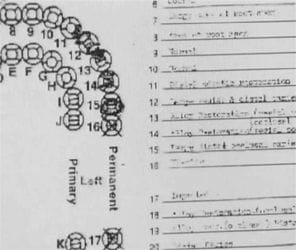How a Woman Faked Her Own Kidnapping to Start a New Life

The disappearance of Denise Bolser is one of the most extraordinary criminal mysteries in American history. In January 1985, the quiet, rural town of Raymond, New Hampshire, was rocked by news that one of its residents, 24-year-old Denise, had been kidnapped for ransom. The revelation hit the modest community like a bombshell, instantly becoming the talk of the town.

Denise's husband, Chuck Bolser, was the one who reported her missing. He told police he had returned home to find a ransom note attached to the refrigerator door. But his story immediately raised red flags: he claimed to have been home for over six hours before he "casually" noticed the note. This strange delay made investigators suspicious. Why had Chuck waited so long? Was he involved, or did he know more than he was letting on?

Denise, an accountant at a local wholesale company, had left for work at 6:30 AM but never arrived at her office. Strangely, a few hours later, at 10 AM, she was seen at a bank withdrawing money before her trail went cold. As police tapped the Bolsers' phone, hoping for a call from the kidnappers, other unsettling details emerged. Denise's sister, Joanna, revealed that she had seen bruises on Denise's wrists and head shortly before her disappearance. Though Denise had attributed them to a car accident, police records showed no such incident had occurred. This testimony heightened suspicion of Chuck, especially since the couple had a history of domestic disputes.
Three weeks later, the case seemed to be moving forward when Denise's Nissan was found in a parking lot at Boston's Logan International Airport. Her documents were neatly arranged on the front seat. The most bizarre twist was that the car was "discovered" by Chuck Bolser himself, who claimed he had been conducting his own private investigation. Convinced he had known the car's location all along, investigators arrested him. However, the charges were quickly dropped. Chuck passed a polygraph test with flying colors, and a thorough check of his alibi confirmed he was physically unable to have kidnapped his wife.

The investigation stalled for years. Theories surfaced about possible embezzlement at her firm, but this lead also went nowhere. In 1996, eleven years after she vanished, a female skeleton was found, and forensic odontology confirmed an astounding 32 matches with Denise's dental records. The investigators were certain they had found her remains and officially closed the case.

However, a retired New Hampshire police officer refused to give up. He was convinced that Denise Bolser was still alive, having faked her own kidnapping to escape her husband and start over. In 2001, he launched a website dedicated to her disappearance. The site caught the attention of a private investigator in Florida, who employed a novel search strategy. She theorized that people who create new identities often keep their first name while changing their last name and relocate to a region with a drastically different climate. Using these filters, she quickly found Denise James, an accountant who had moved to Florida in the mid-1980s.
In May 2002, nearly 17 years after her disappearance, Denise was found. Her brother and sister, who had traveled to Florida with police, immediately identified her. Denise confessed to staging her own kidnapping to escape her former boss, who she claimed was trying to pin a more than $100,000 embezzlement on her. Though authorities suspected she was the one who had stolen the money, her motives remained complex. In the end, instead of facing criminal charges, she was fined a symbolic $1,500 for the crime of "disorderly conduct," a minimal price for the immense cost of her 17-year-long search.
The Denise Bolser case had a profound impact on forensic science. The mistaken identification of her remains shattered the previously held belief that traditional forensic odontology and anthropology were infallible. The case became a stark lesson: even a high number of dental and skeletal matches cannot guarantee absolute certainty. Today, DNA analysis is considered the only method for a 100% conclusive identification of human remains.
